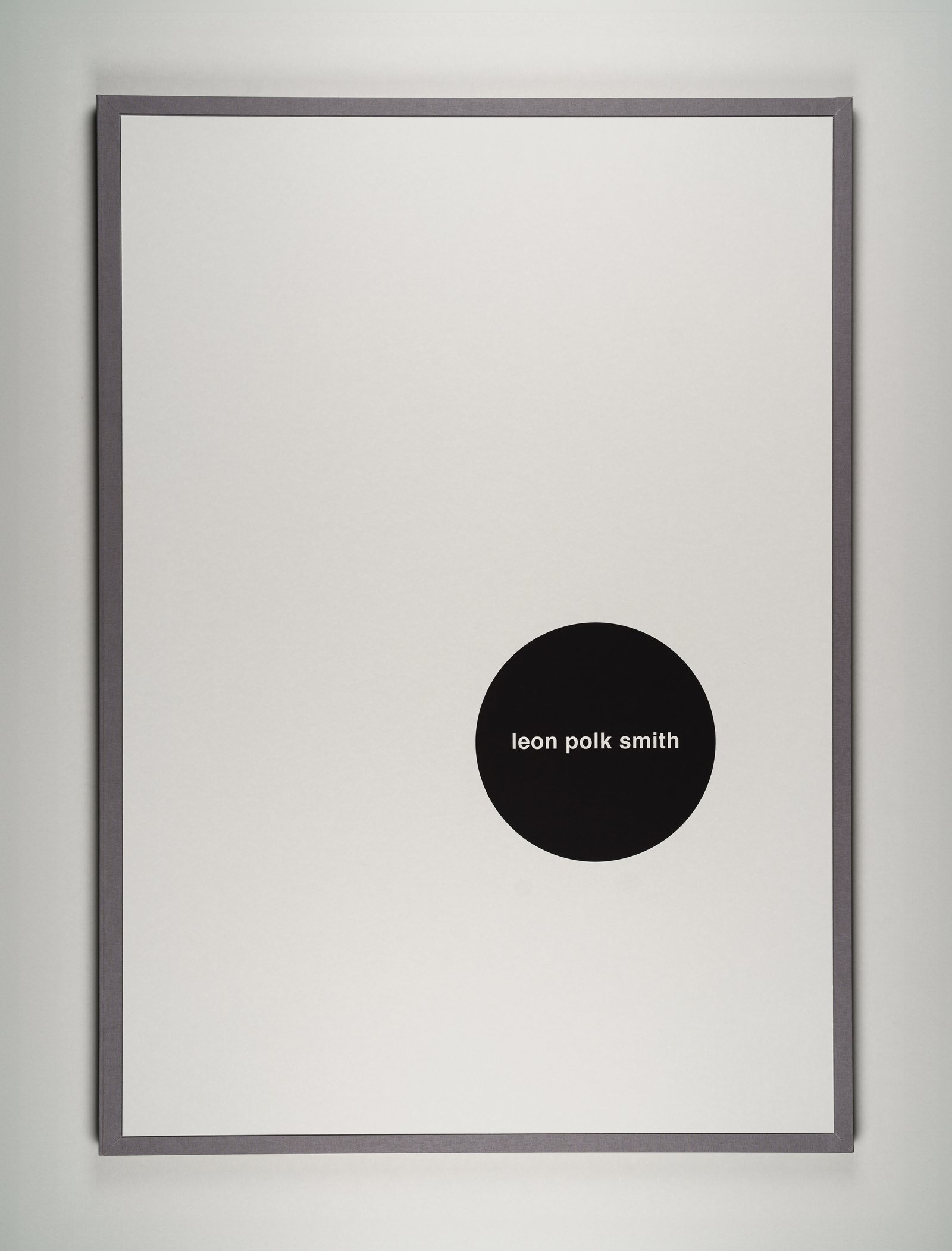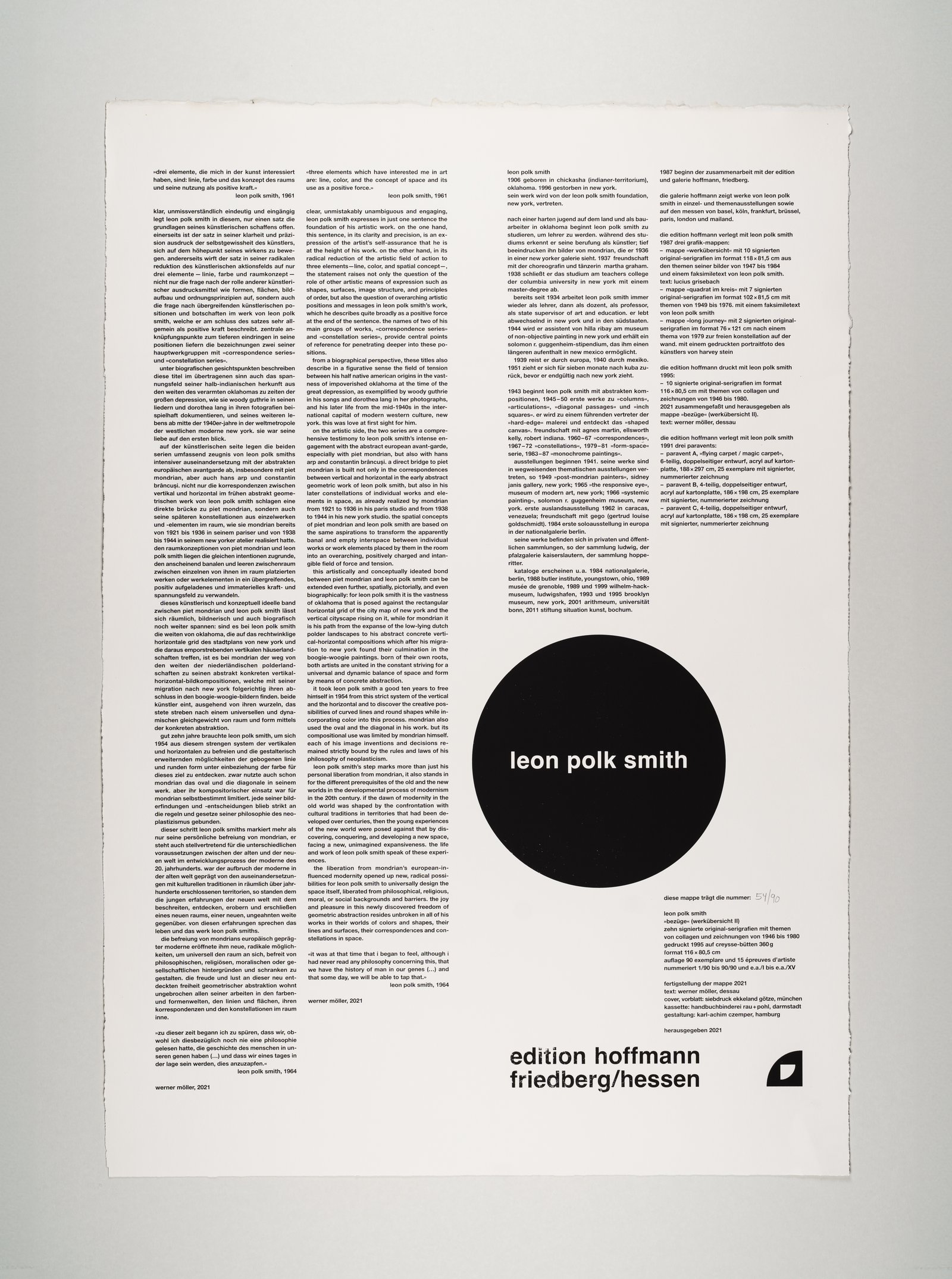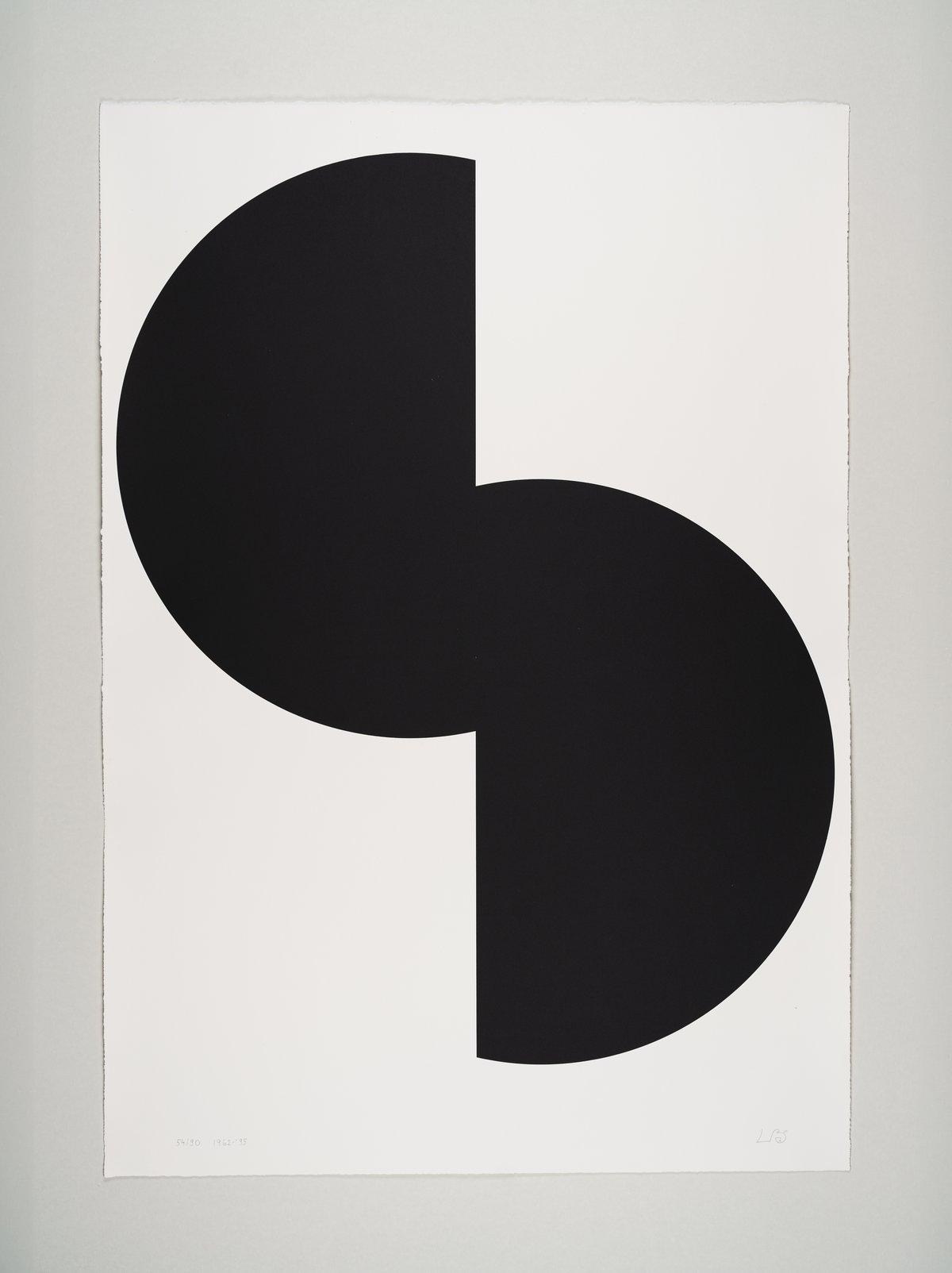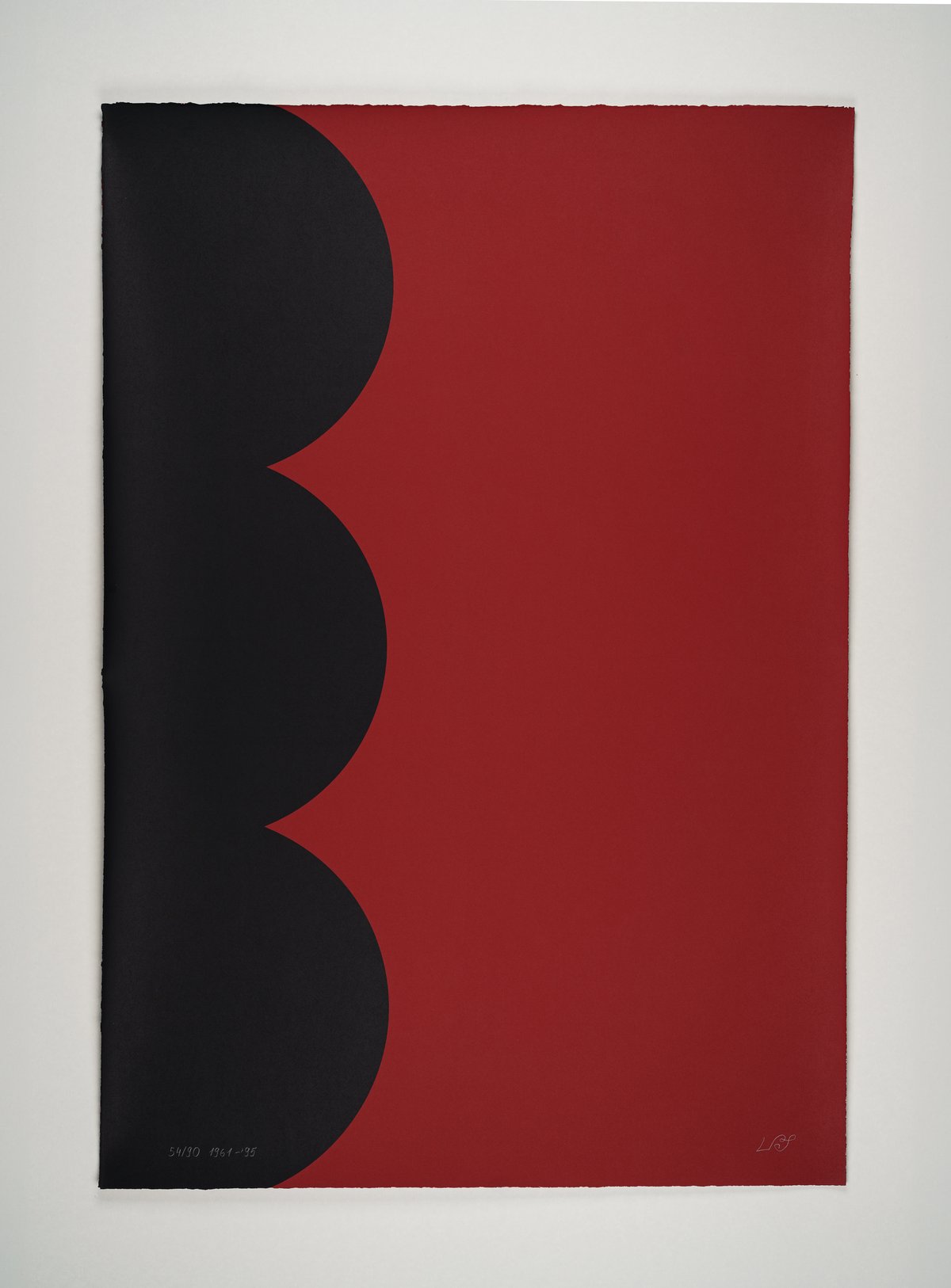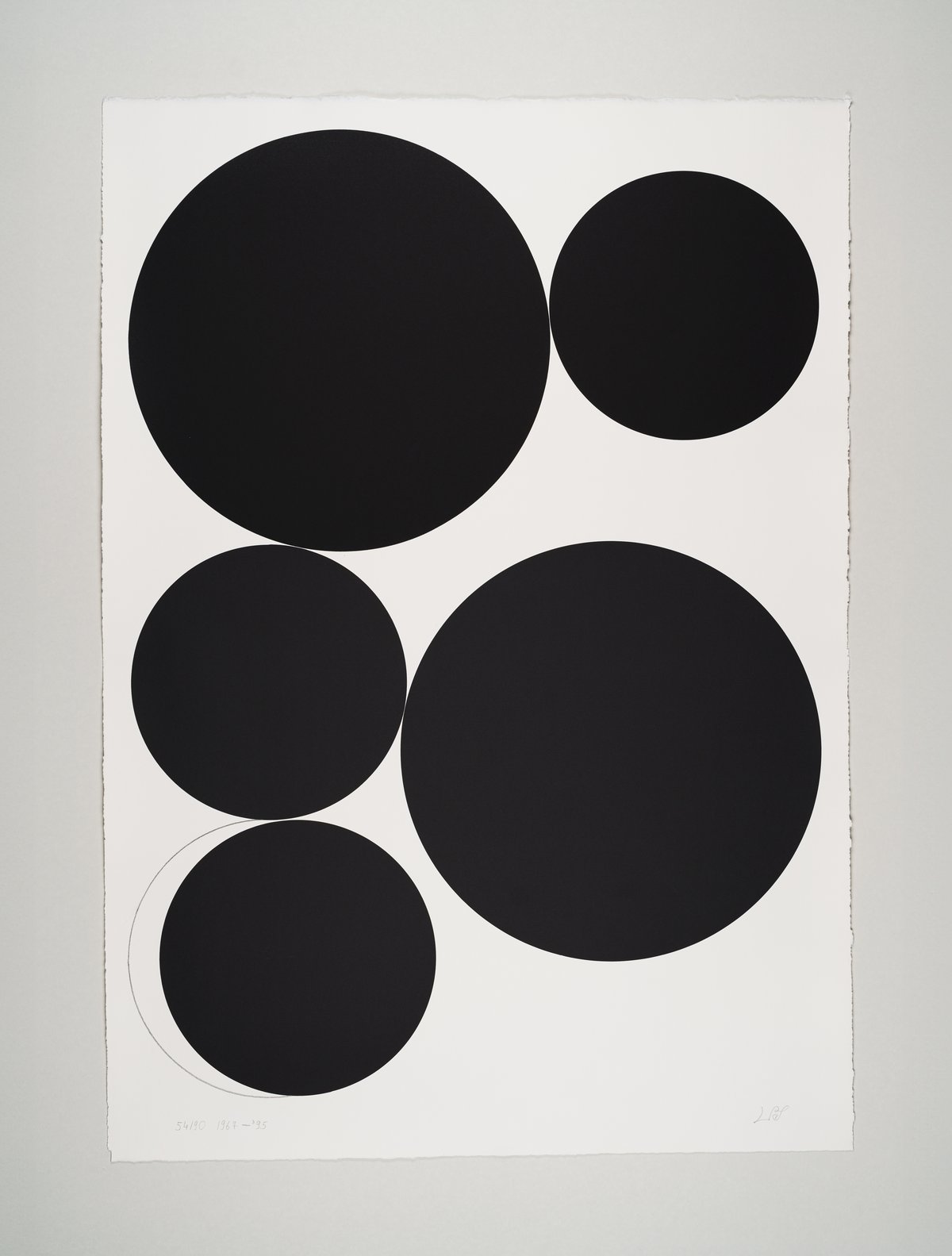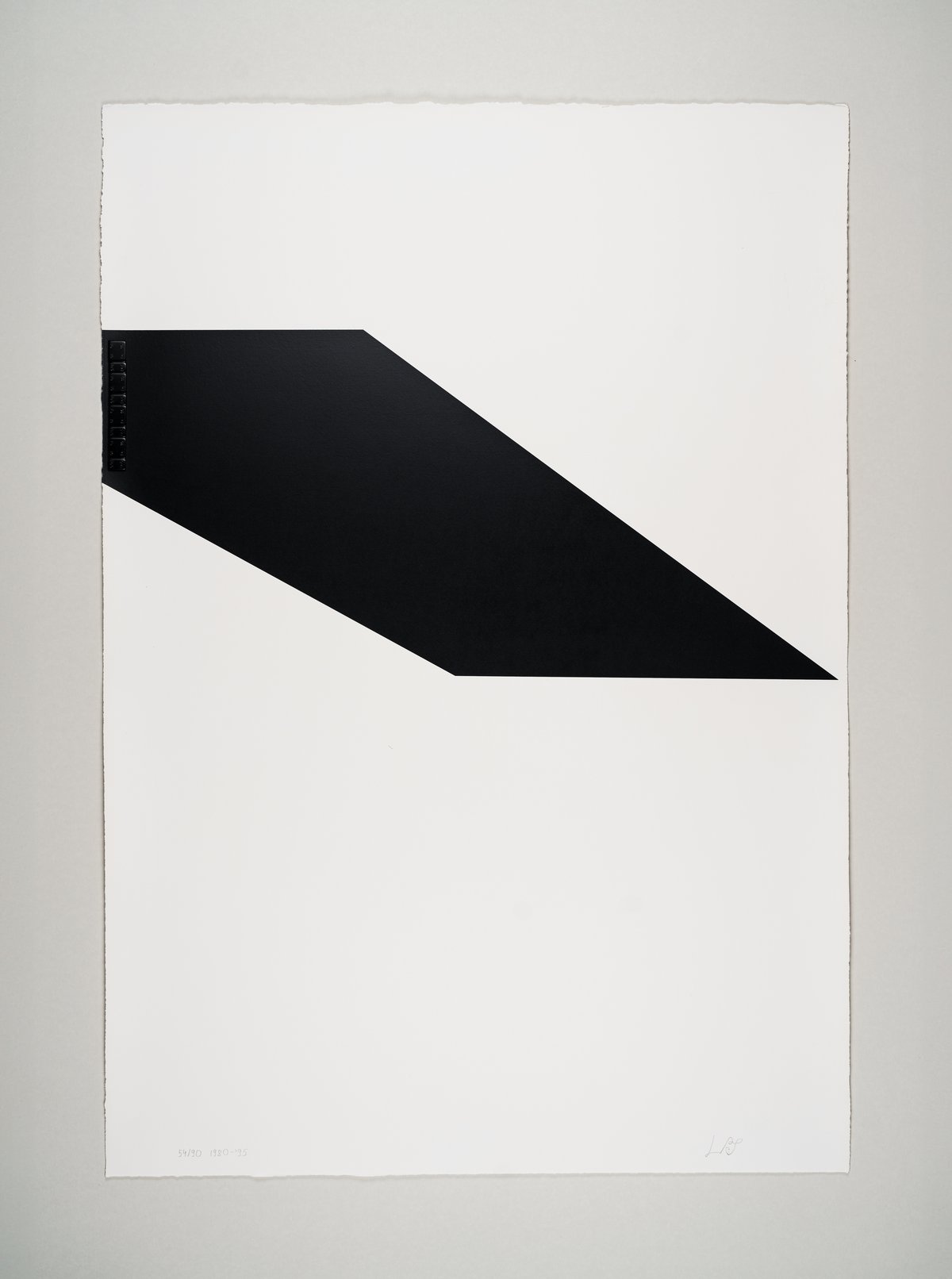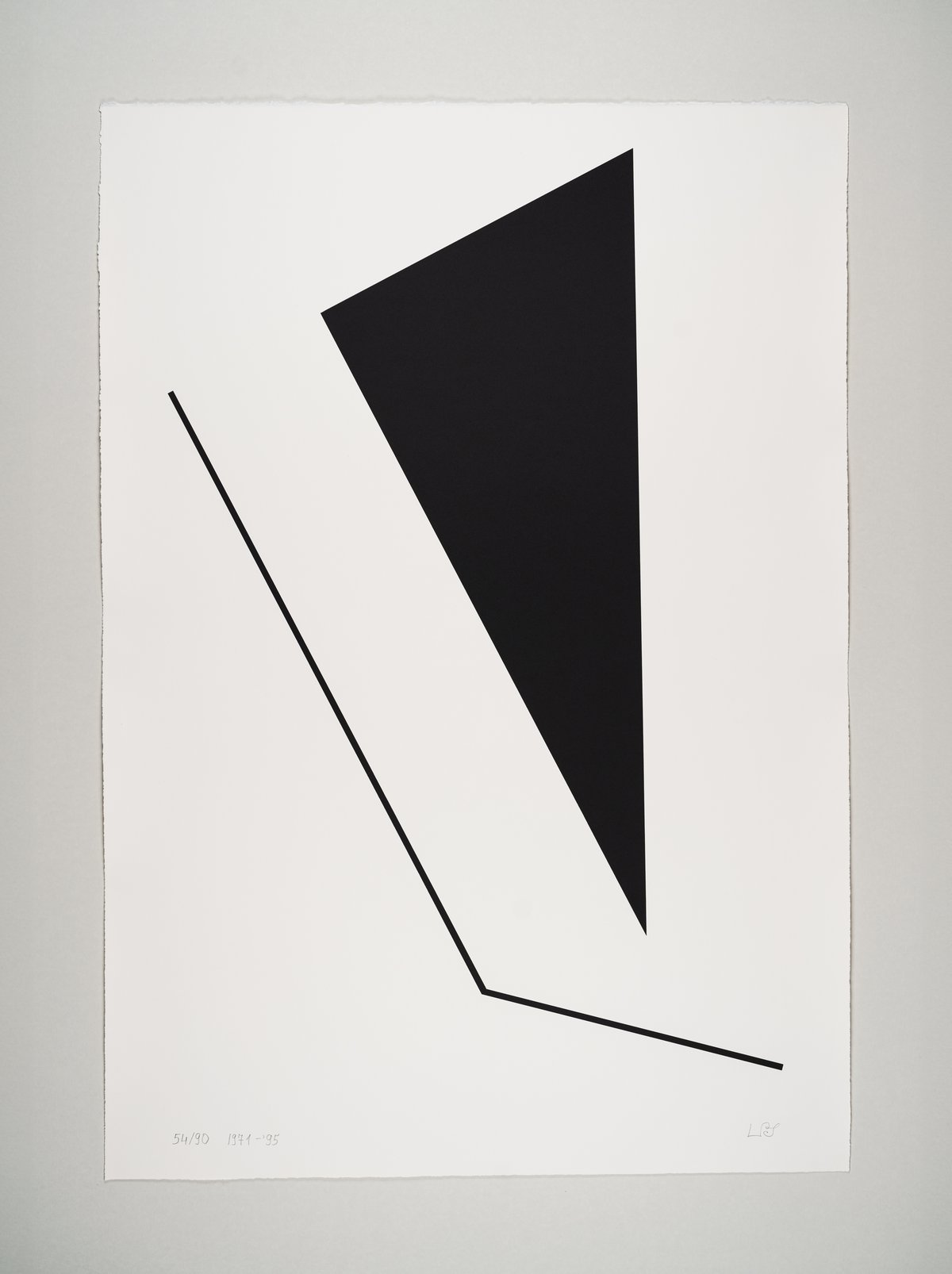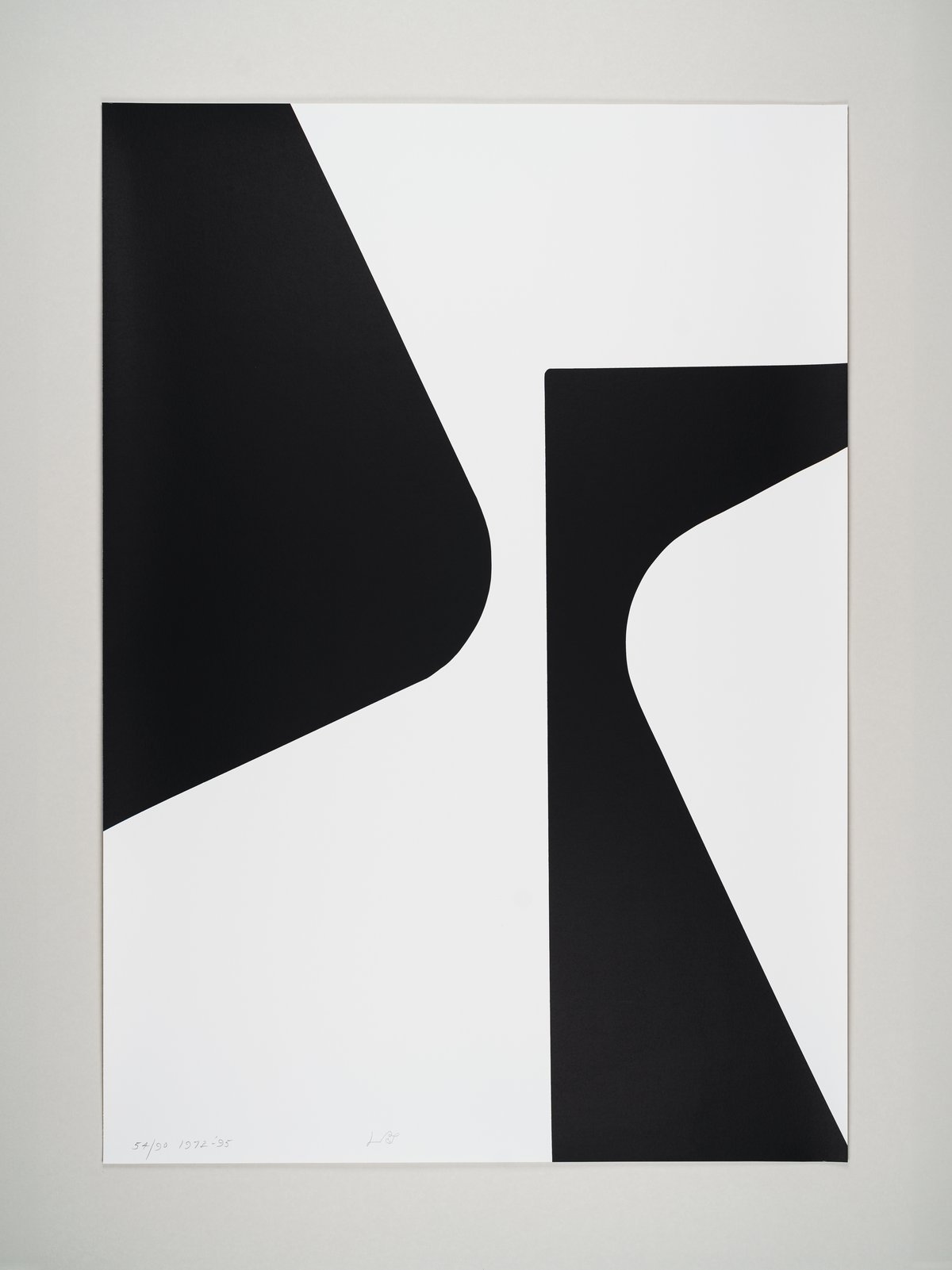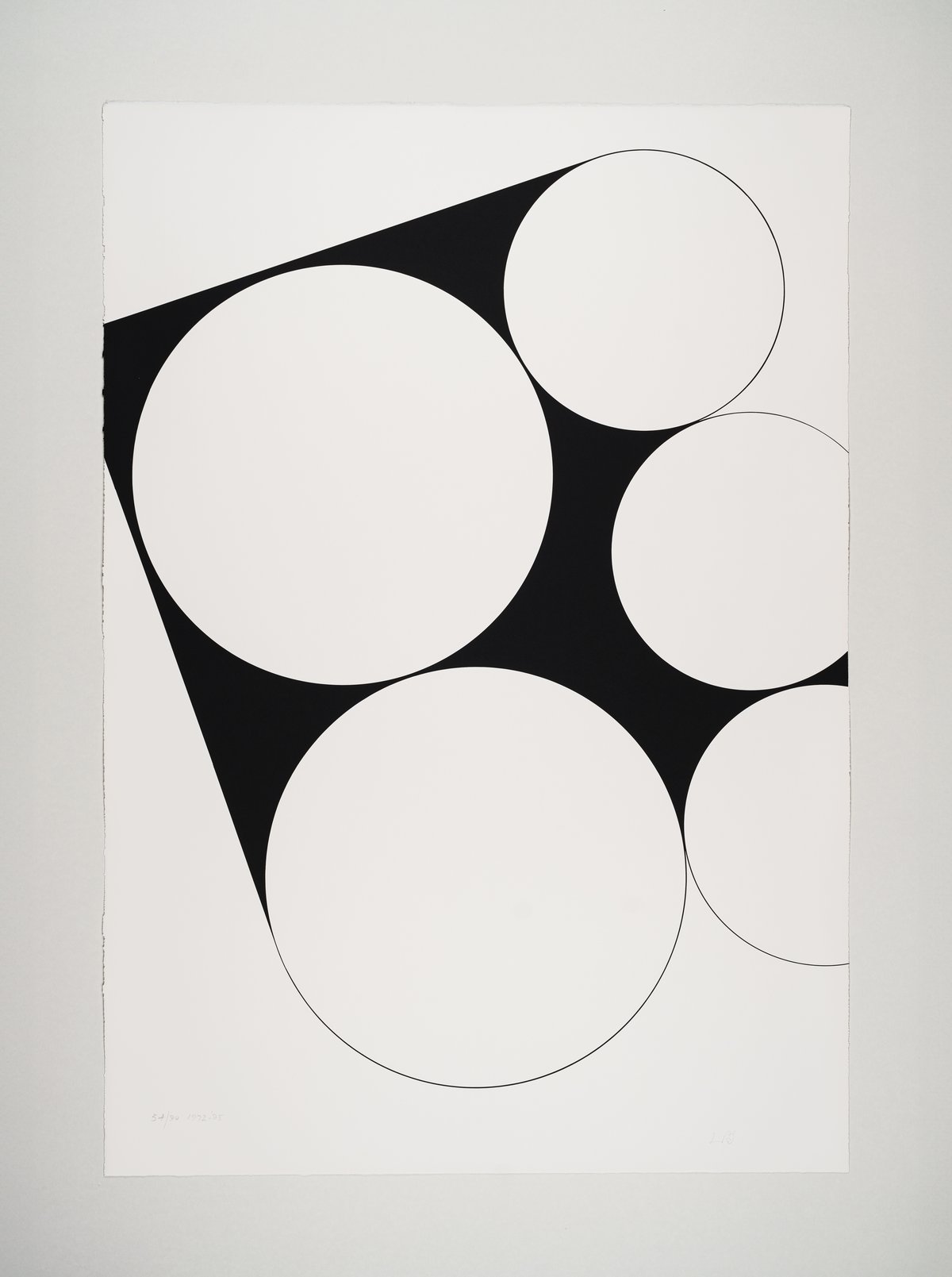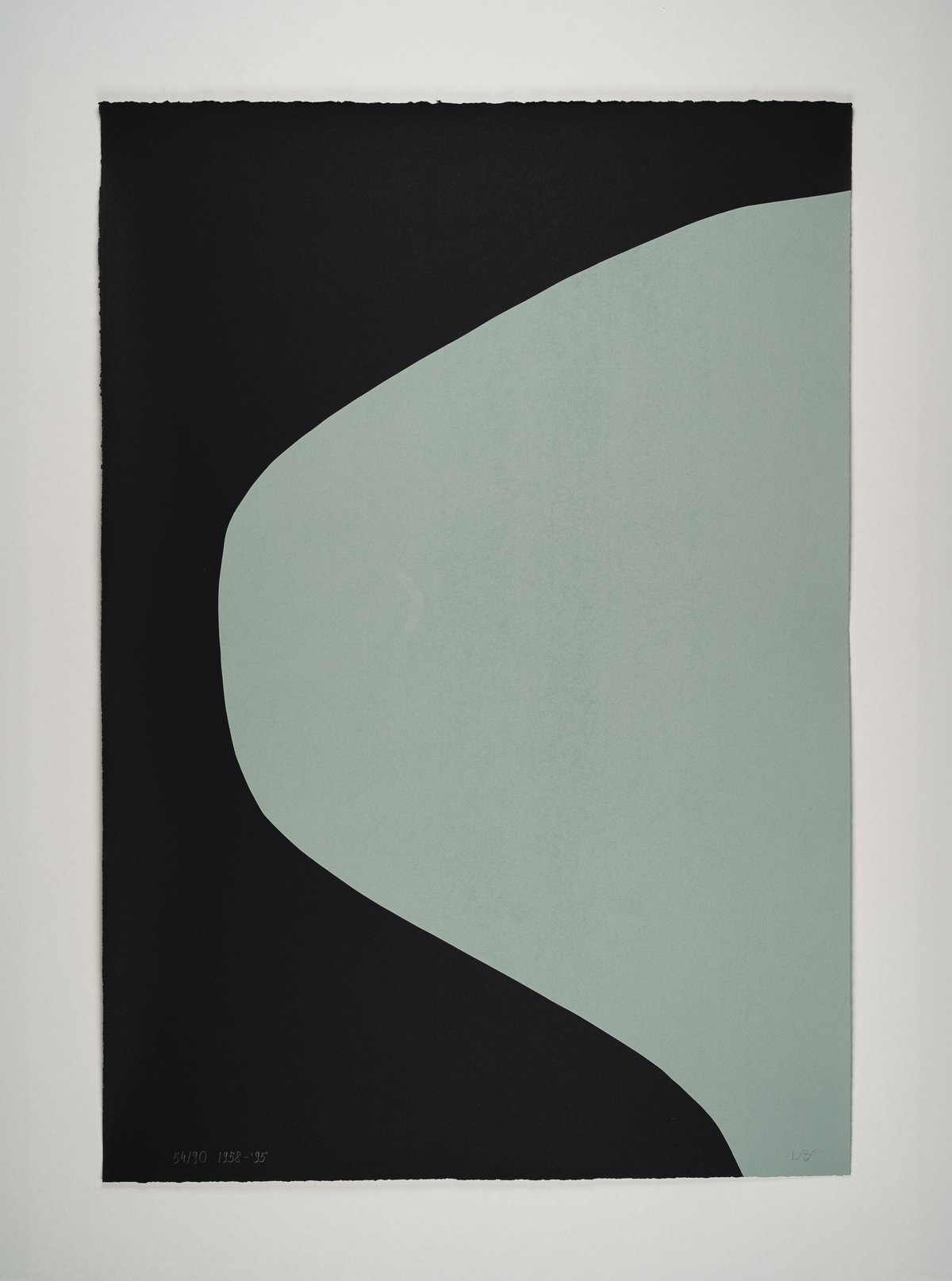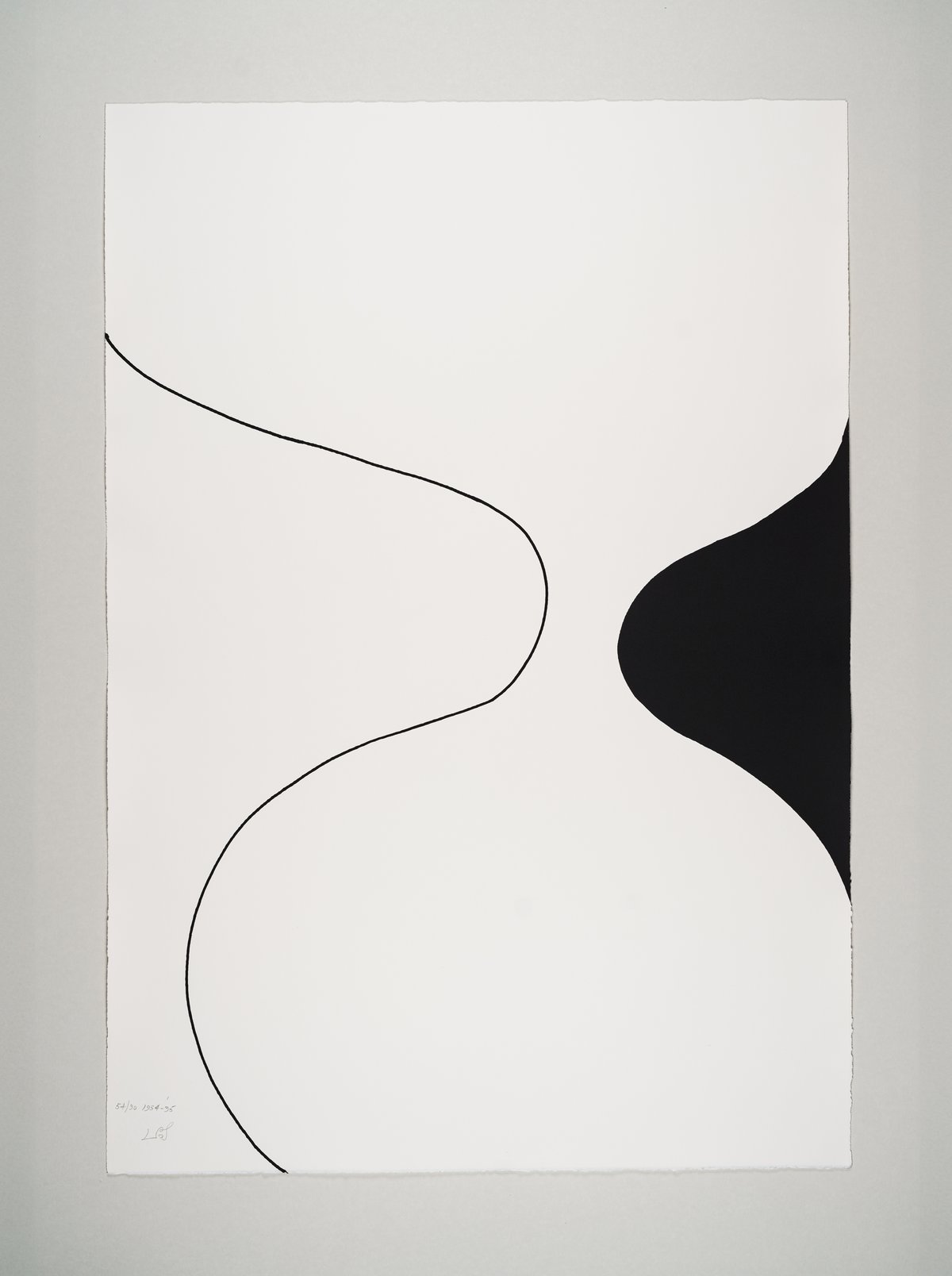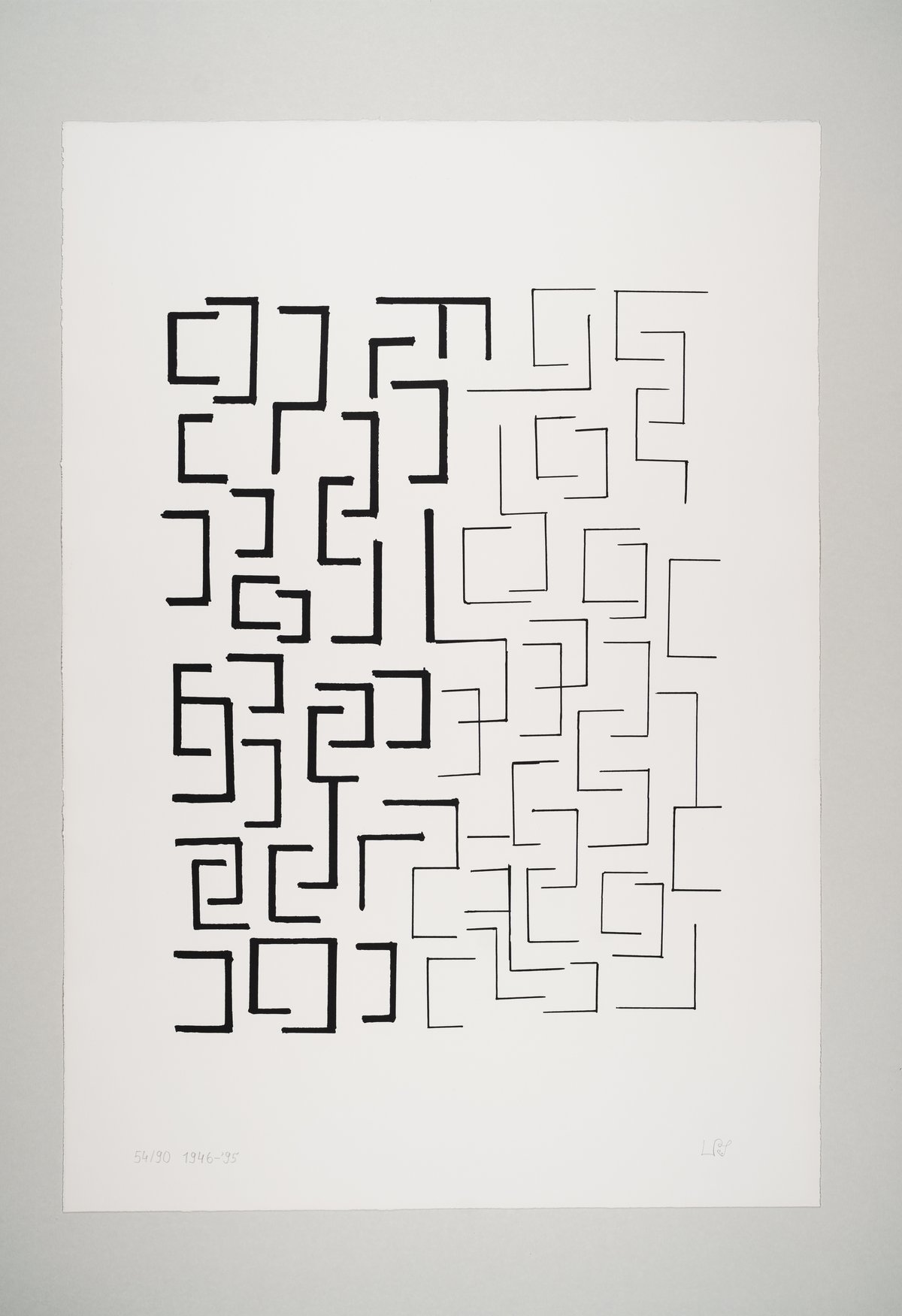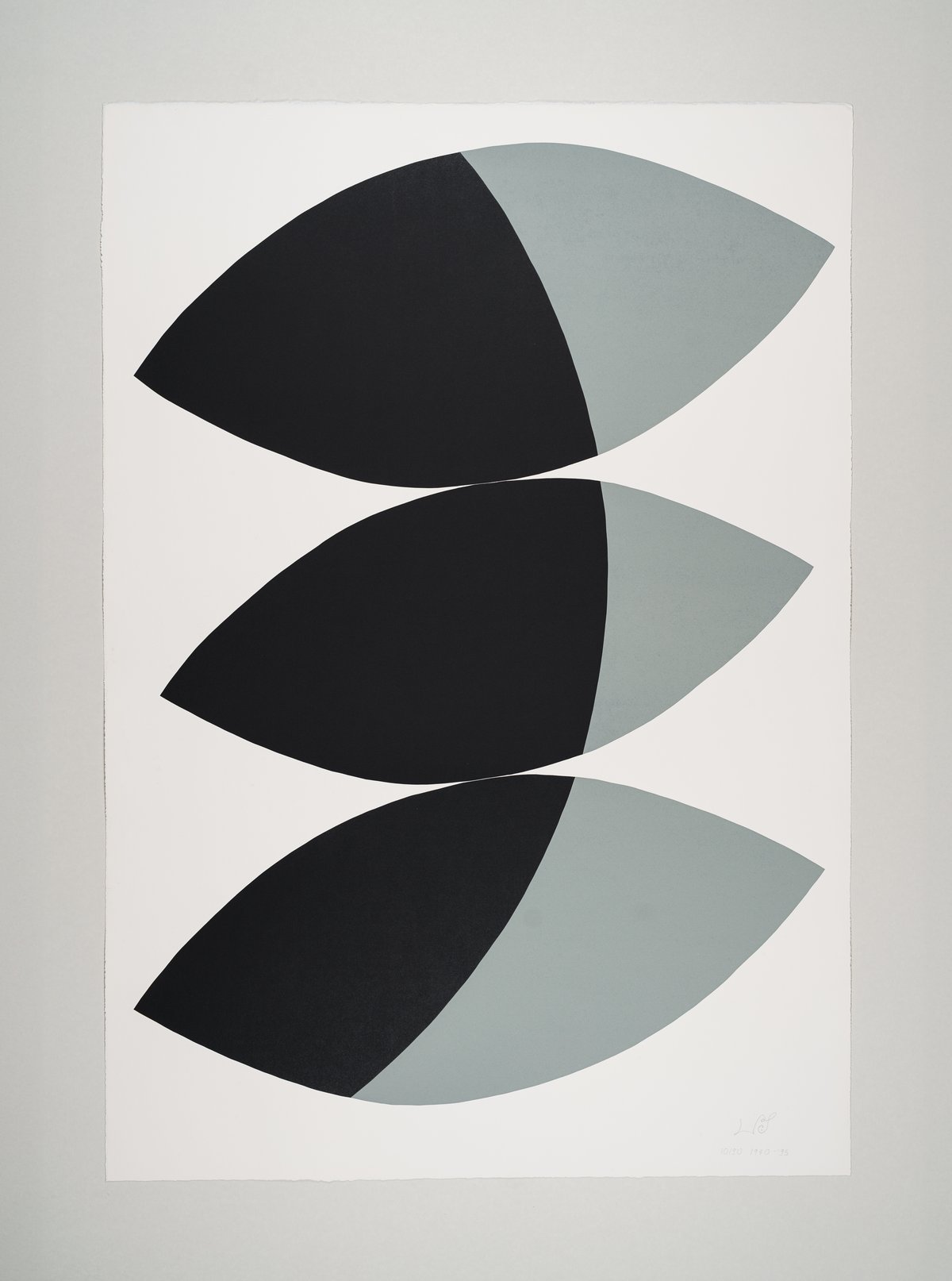werkübersicht ii
leon polk smith
1946-80/1995
silk screen print on laid paper
116 × 81 cm
2′ 7 14⁄16″ × 3′ 9 11⁄16″
edition hoffmann
edition of 90
signed, dated and numbered
11-part portfolio
publisher: edition hoffmann
design/layout: karl-achim czemper
printer: edition hoffmann
15000 € incl. VAT
"three elements which have interested me in art are: line, color, and the concept of space and its use as a positive force." leon polk smith, 1961
clear, unmistakably unambiguous and engaging, leon polk smith expresses in just one sentence the foundation of his artistic work. on the one hand, this sentence, in its clarity and precision, is an expression of the artist's selfassurance that he is at the height of his work. on the other hand, in its radical reduction of the artistic field of action to three elements -line, color, and spatial concept-, the statement raises not only the question of the role of other artistic means of expression such as shapes, surfaces, image structure, and principles of order, but also the question of overarching artistic positions and messages in leon polk smith's work, which he describes quite broadly as a positive force at the end of the sentence. the names of two of his main groups of works, "correspondence series" and "constellation series", provide central points of reference for penetrating deeper into these positions.
from a biographical perspective, these titles also describe in a figurative sense the field of tension between his half native american origins in the vastness of impoverished oklahoma at the time of the great depression, as exemplified by woody guthrie in his songs and dorothea lang in her photographs, and his later life from the mid-1940s in the international capital of modern western culture, new york. this was love at first sight for him.
on the artistic side, the two series are a comprehensive testimony to leon polk smith's intense engagement with the abstract european avantgarde, especially with piet mondrian, but also with hans arp and constantin brâncusi. a direct bridge to piet mondrian is built not only in the correspondences between vertical and horizontal in the early abstract geometric work of leon polk smith, but also in his later constellations of individual works and elements in space, as already realized by mondrian from 1921 to 1936 in his paris studio and from 1938 to 1944 in his new york studio. the spatial concepts of piet mondrian and leon polk smith are based on the same aspirations to transform the apparently banal and empty interspace between individual works or work elements placed by them in the room into an overarching, positively charged and intangible field of force and tension.
this artistically and conceptually ideated bond between piet mondrian and leon polk smith can be extended even further, spatially, pictorially, and even biographically: for leon polk smith it is the vastness of oklahoma that is posed against the rectangular horizontal grid of the city map of new york and the vertical cityscape rising on it, while for mondrian it is the path from the low-lying dutch polder landscapes to his abstract concrete vertical-horizontal compositions which after his migration to new york found their conclusion in the boogiewoogie paintings. born of their own roots, both artists are united in the constant striving for a universal and dynamic balance of space and form by means of concrete abstraction.
it took leon polk smith a good ten years in 1954 to free himself from this strict system of vertical and horizontal and to discover the creative possibilities of curved lines and round shapes while incorporating color into this process. mondrian also used the oval and the diagonal in his work. but its compositional use was limited by mondrian himself. each of his image inventions and decisions remained strictly bound by the rules and laws of his philosophy of neoplasticism.
leon polk smith's step marks more than just his personal liberation from mondrian, it also stands in for the different prerequisites of the old and the new worlds in the developmental process of modernism in the 20th century. if the dawn of modernity in the old world was shaped by the confrontation with cultural traditions in territories that had been developed over centuries, then the young experiences of the new world were posed against that by discovering, conquering, and developing a new space, facing a new, unimagined expansiveness. the life and work of leon polk smith speak of these experiences.
the liberation from mondrian's european-influenced modernity opened up new, radical possibilities for leon polk smith to universally design the space itself, liberated from philosophical, religious, moral, or social backgrounds and barriers. the joy and pleasure in this newly discovered freedom of geometric abstraction resides unbroken in all of his works in their worlds of colors and shapes, their lines and surfaces, their correspondences and constellations in space.
"it was at that time that i began to feel, although i had never read any philosophy concerning this, that we have the history of man in our genes (...) and that some day, we will be able to tap that." leon polk smith, 1964
werner möller, 2021
